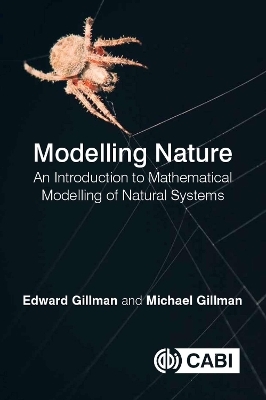
Modelling Nature
An introduction to mathematical modelling of natural systems
Seiten
2019
CABI Publishing (Verlag)
978-1-78639-313-5 (ISBN)
CABI Publishing (Verlag)
978-1-78639-313-5 (ISBN)
This textbook introduces the basic concepts of mathematical modelling when applied to natural systems. It focuses on tackling real-world problems from a variety of fields including physics, ecology, geology and epidemiology.
This short textbook introduces students to the concept of describing natural systems using mathematical models. We highlight the variety of ways in which natural systems lend themselves to mathematical description and the importance of models in revealing fundamental processes. The process of science via the building, testing and use of models (theories) is described and forms the structure of the book. The book covers a broad range from the molecular to ecosystems and whole-Earth phenomena. Themes running through the chapters include scale (temporal and spatial), change (linear and nonlinear), emergent phenomena and uncertainty. Mathematical descriptions are kept to a minimum and we illustrate mechanisms and results in graphical form wherever possible. Essential mathematical details are described fully, with the use of boxes. The mathematics supports but does not lead the text.
This short textbook introduces students to the concept of describing natural systems using mathematical models. We highlight the variety of ways in which natural systems lend themselves to mathematical description and the importance of models in revealing fundamental processes. The process of science via the building, testing and use of models (theories) is described and forms the structure of the book. The book covers a broad range from the molecular to ecosystems and whole-Earth phenomena. Themes running through the chapters include scale (temporal and spatial), change (linear and nonlinear), emergent phenomena and uncertainty. Mathematical descriptions are kept to a minimum and we illustrate mechanisms and results in graphical form wherever possible. Essential mathematical details are described fully, with the use of boxes. The mathematics supports but does not lead the text.
Edward Gillman is with Imperial College, London. Michael Gillman is with Imperial College, London.
Chapter 1: Modelling the Changing Arctic Ice Chapter 2: Modelling Bacterial Population Growth Chapter 3: Modelling the Growth of Human Populations Chapter 4: Modelling Radioactive Decay to Determine the Age of the Earth Chapter 5: Modelling the Distribution of Butterfly Species Chapter 6: Volcanic Gas, Environmental Damage and Statistical Models
| Erscheinungsdatum | 05.06.2019 |
|---|---|
| Verlagsort | Wallingford |
| Sprache | englisch |
| Maße | 189 x 246 mm |
| Gewicht | 671 g |
| Themenwelt | Naturwissenschaften ► Biologie ► Ökologie / Naturschutz |
| ISBN-10 | 1-78639-313-1 / 1786393131 |
| ISBN-13 | 978-1-78639-313-5 / 9781786393135 |
| Zustand | Neuware |
| Haben Sie eine Frage zum Produkt? |
Mehr entdecken
aus dem Bereich
aus dem Bereich


